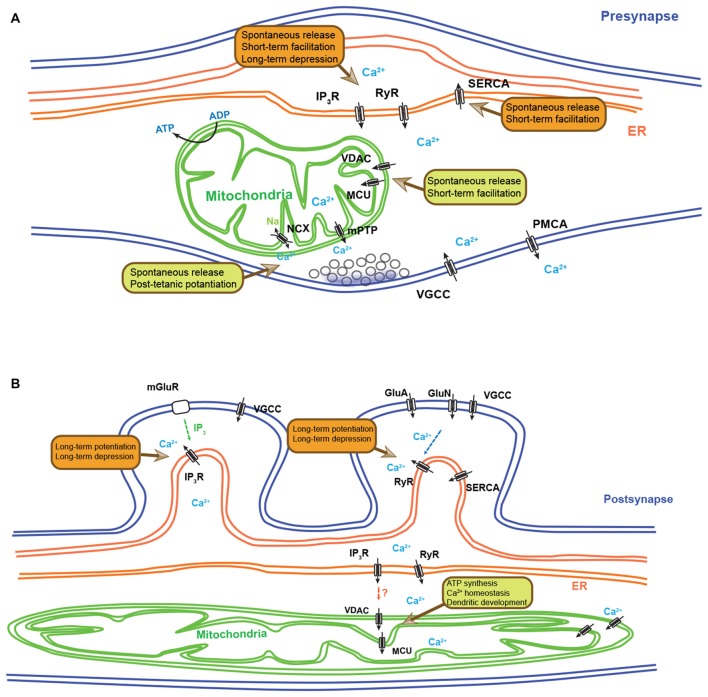Figure 1.
Synaptic functions regulated by endoplasmic reticulum (ER) and mitochondria-dependent Ca2+ homeostasis. (A) Schematic diagram depicting the presynaptic functions regulated by ER- and mitochondria-dependent Ca2+ dynamics. Ca2+ release from ER can modulate spontaneous neurotransmitter release, short-term facilitation (STF) and long-term depression (LTD). Ca2+ re-uptake by the ER controls the spontaneous release and STF. Presynaptic mitochondria also play important roles in regulating spontaneous neurotransmitter release, STF and post-tetanic potentiation (PTP) through their ability to regulate Ca2+ clearance. (B) A simplified schematic diagram depicting the postsynaptic functions regulated by ER- and mitochondria-dependent Ca2+ dynamics. Ca2+ release from ER via IP3-induced Ca2+ release (IICR) and Ca2+-induced Ca2+ release (CICR) controls long-term potentiation (LTP) and LTD. In fact, depending on neuronal and synaptic subtypes, IP3R and RyR show differential distribution and distinct synaptic functions. Dendritic mitochondrial Ca2+ influx can regulate ATP synthesis, Ca2+ homeostasis and dendritic development. In non-neuronal cell types, direct Ca2+ exchange between ER and mitochondria have been described, but their role in neurons has not yet been documented. IP3R, IP3 receptor; RyR, ryanodine receptor; SERCA, smooth endoplasmic reticulum Ca2+-ATPase; VGCC, voltage-gated Ca2+ channel; PMCA, plasma membrane Ca2+-ATPase; NCX: the Na+/Ca2+ exchanger; mPTP, mitochondrial permeability transition pore; MCU, mitochondrial calcium uniporter; VDAC, voltage-dependent anion channel; mGluR, metabotropic glutamate receptor; GluN, NMDA receptor.

